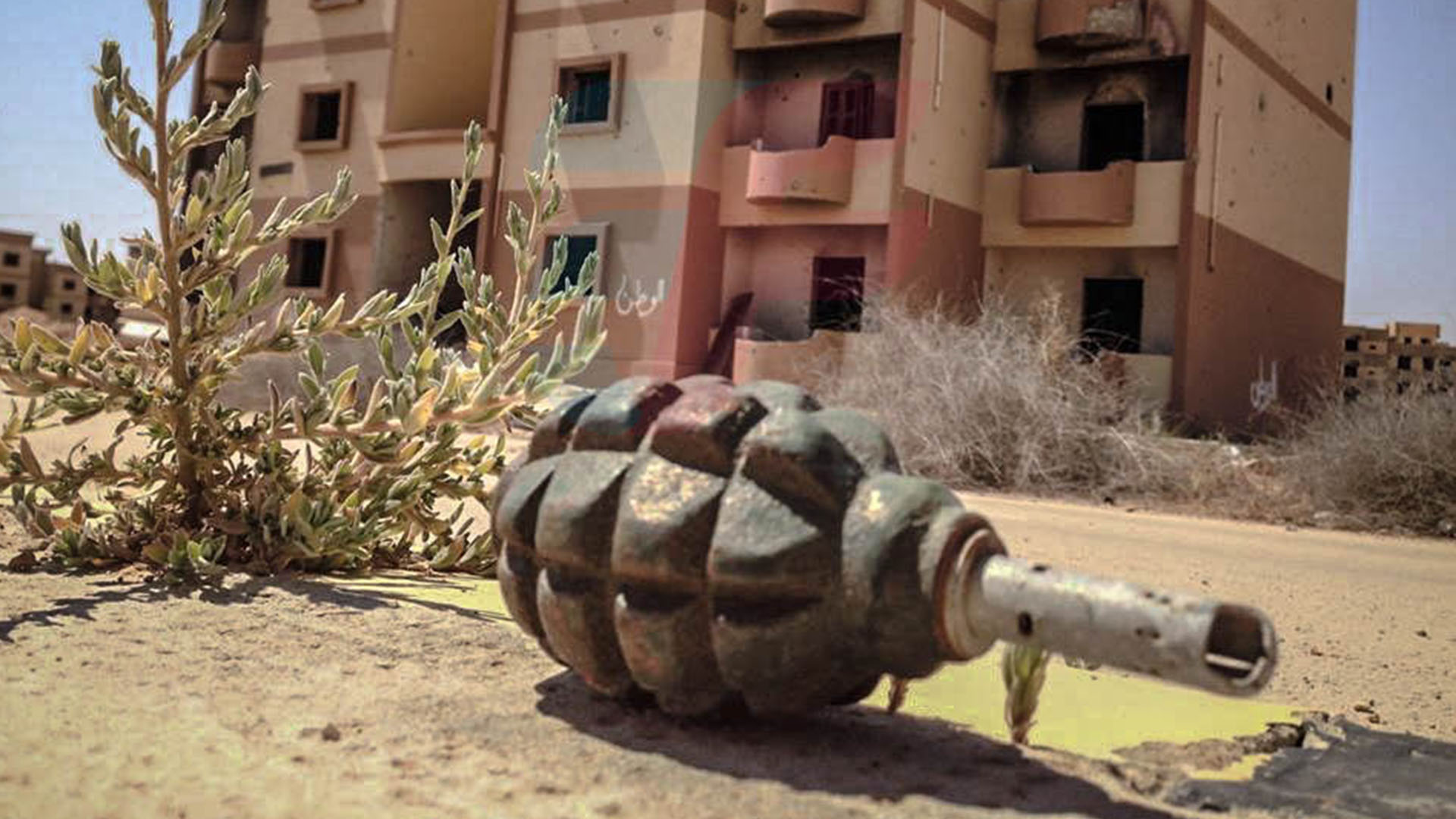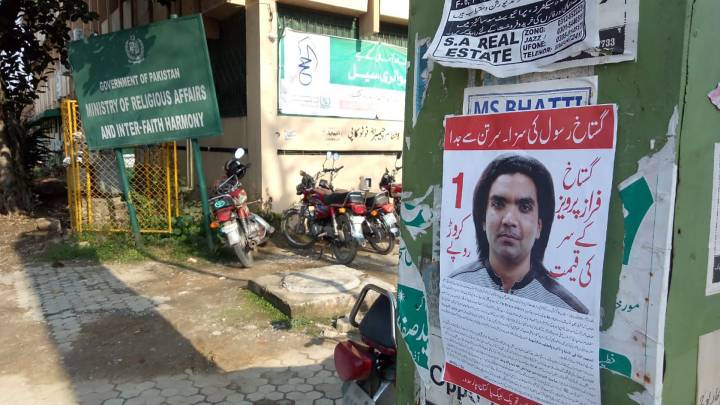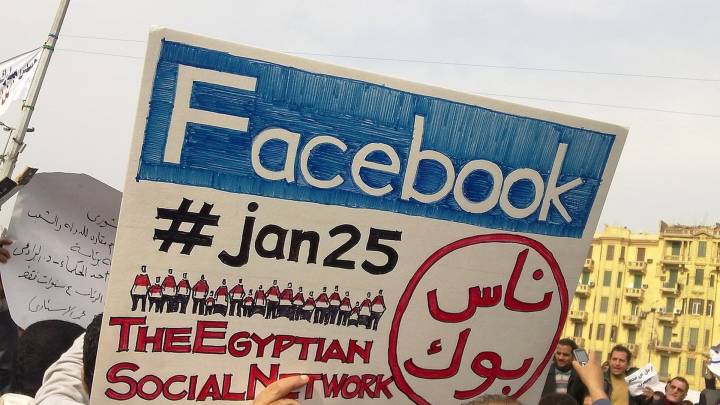Mines and unexploded ordnances pose a threat at every step of the way. Efforts to dispose of the remnants of war aim to reclaim safe spaces–and a common ground for shared experiences for Libyans from all parts of the country.
The stench of death is all Sayed Al-Saity remembers from his friend’s wedding on 9th September 2015. The ceremony took place near the airport in the Libyan city of Benghazi, which was engulfed in a bloody battle between a loose alliance of Islamist militias and strongman Khalifa Haftar’s self-declared Libyan National Army (LNA).
The wedding was a joyous occasion until nine-year-old Ismael was seen running frantically towards the procession. When Al-Saity rushed towards Ismael with the rest of the wedding guests, he saw the boy’s intestines bleeding onto the ground. Further away, Al-Saity spotted the disfigured body of his 10-year-old son Anas. “My son was unconscious and some of his fingers were blown off,” Al-Saity recalls. “He was playing next to a school with Ismael and four other boys when a random explosion went off.”
The explosion came from a mine, killing two of the children instantly. An LNA convoy rushed the others to the nearest hospital. That’s where Anas stayed in intensive care for 22 days before receiving more treatment in Cairo.
Mines and unexploded ordnances have become a deadly residue of war in Libya. In 2016, mines alone killed 145 people and wounded 1,465, according to local monitors and the International Committee of the Red Cross (ICRC). Many of the casualities were young children like Ismael and Anas, but others were Libyan deminers who were poorly equipped or trained for the task.
Some school grounds are particularly dangerous since they were the scene of heavy clashes
Misbah Ramadan was embedded with the LNA when he entered a school in Benghazi on 24th May 2016. Like most deminers, he didn’t have a mine detector nor protective gear. Yet he still counted 13 mines in the hallway before the entrance came under fire. Trying to retreat, he felt a click beneath his foot. “It detonated late,” he told zenith over the phone. “I just remember my unit yelling, ‘Misbah stay down. You lost your legs.”
Within moments, Ramadan was rushed to the hospital. Despite the tragedy, he considers himself lucky that he didn’t die. During the war for Benghazi, at least 50 deminers were killed on duty, an LNA source told Reuters. Several of them were Ramadan’s friends.
Most LNA supporters blame extremist groups such as the Islamic State (IS) for laying the mines and boobytraps around the city. But Ramadan admits that the LNA also used mines, ‘though not in the same savage way as the groups it was fighting,’ he claims.
Whatever the truth, civilians are in danger the most. Anas Alagory, who works for a local organization called The Hope Benghazi Foundation, is trying to mitigate the risks. As a public health specialist, he is warning communities to stay away from the remnants of war. Some school grounds are particularly dangerous since they were the scene of heavy clashes.
“I have visited different schools and communities to speak about the risk of mines and abandoned ammunition,” Alagory told zenith. “But I don’t go anywhere near the mines myself. You have to be extremely well trained to remove them.”
“We became a family and we exchanged stories about the war,” said Torkman. “[By the end of the training] all of us realized that we were all from Tripoli and that we were all from Benghazi.”
Mohamed Torkman was one of 12 Libyan men sent to Kosovo in the summer of 2017. Each one was chosen by various NGOs to learn how to classify unexploded ordnances and to secure the premise after one is found. The training was funded by the European Union via the Danish Demining Group (DDG), a non-profit based in Denmark.
Torkman was one of three men sent by the Free Fields Foundation (3F), a Tripoli-based NGO dedicated to disposing unexploded ordnances. Impressed with his engineering background and self-motivation, 3F hired Torkman in 2016. “I was told I was overqualified, but I just wanted to save lives,” he said.
In Kosovo, Torkman was nervous about meeting the trainees from Benghazi. By then, the LNA was controlling the city and at odds with the internationally backed government in Tripoli. With the country locked in a civil war, he feared that his peers would treat him as an enemy, but he was wrong.
“We became a family and we exchanged stories about the war,” said Torkman. “[By the end of the training] all of us realized that we were all from Tripoli and that we were all from Benghazi.”
After the training in Kosovo, Torkman became a deputy leader of his team at 3F. He received additional training in Kosovo last winter, making him a team leader which is tasked with disposing of unexploded ordnances.
Lutz Kosewsky, a former engineer in the German army and an advisor at 3F, explains that the organisation has search teams in Tripoli and Misrata, and a hotline that civilians can call if they come across remnants of war. He also said that 3F is looking to expand its operations into the city of Warshefana and towns in the south.
Torkman says that 3F has removed 97 unexploded ordnances in the city and that he disposed of about half of them
“What’s happening to Libya is that many [demining] NGOs are rushing to Sirte and Benghazi where there is lots of contamination. But I’m advising 3F not to neglect other communities, ”said Koswesky.
Torkman and his colleagues also aren’t neglecting each other. On most nights, he communicates with his peers in Benghazi to receive advice and exchange experiences. Nobody, he says, can claim to be an expert when a livelihood is this dangerous. That was clear after his friend lost an eye while trying to remove a mine in Benghazi on November 23. The blast reportedly killed another man.
Despite the risks, there is a lot of work to do in the future. The Libyan conflict isn’t ending, and most cities are extremely volatile, especially Tripoli. In the fall of 2018, militias clashed in the capital for weeks, killing more than 96 people and displacing hundreds of families.
Since then, Torkman says that 3F has removed 97 unexploded ordnances in the city and that he disposed of about half of them. As a leader, he understands that the only way to save lives is by protecting his own first. “You have to think twice in this business,” he told zenith. “It just takes one incident and there are no spare parts for the body.”





